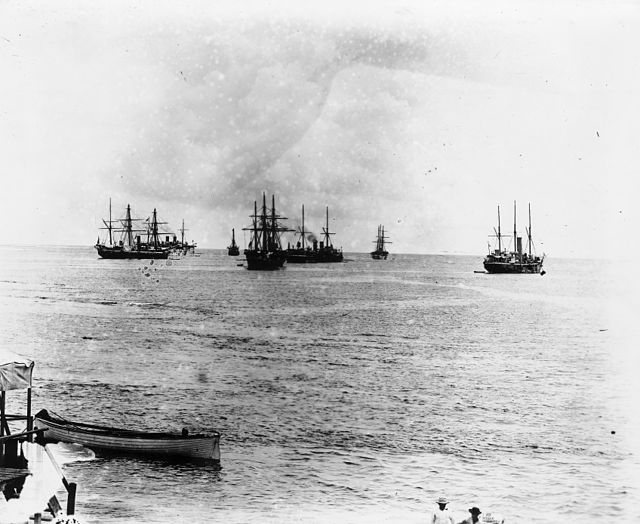The Manuʻa Islands, or the Manuʻa tele, in the Samoan Islands, consists of three main islands: Taʻū, Ofu and Olosega. The latter two are separated only by the shallow, 137-meter-wide Āsaga Strait, and are now connected by a bridge over the strait. The islands are located some 110 kilometers east of Tutuila and are a part of American Samoa, an unincorporated territory of the United States. Their combined area is 56 square kilometers, and they have a total population of 1,400. Taʻu is the largest of these islands, with an area of 44 km2 (17 sq mi), and it has the highest point of the Manuʻa, at 931 meters. Politically, the islands form the Manuʻa District, one of the three administrative divisions of American Samoa.
The Islands of Ofu and Olosega viewed from the village of Sili along the north shore of Olosega. The middle peak is Sunuʻitao on Ofu, across the narrow strait at Asaga from Olosega (foreground and mountain on left)
Tuimanuʻa Elisara
Ofu Beach on Ofu Island
Samoan fale in the Manu'a island group, showing thatched roof and woven pola blinds, circa 1890 - 1910.See also: Architecture of Samoa.
The Samoan Islands are an archipelago covering 3,030 km2 (1,170 sq mi) in the central South Pacific, forming part of Polynesia and of the wider region of Oceania. Administratively, the archipelago comprises all of the Independent State of Samoa and most of American Samoa. The land masses of the two Samoan jurisdictions are separated by 64 km (40 mi) of ocean at their closest points.
German, British and American warships in Apia harbour, 1899.
Young man dressed as a manaia, the son of a Samoan chief (matai), c. 1890–1910. (photo by Thomas Andrew)
Tonga Trench south of the Samoa Islands and north of New Zealand.
Mt Matavanu volcanic eruption on Savai'i island, 1905








